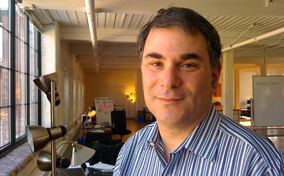Maybe we need to bang together the heads of mad scientists and mad designers.
If we are waiting for randomized double blind studies to tell us how to address the big social system challenges of our time including health care, education, and energy we will be waiting a very long time. That is not how we will transform these systems. It will take passionate exploration, which is more iterative than traditional scientific methodology. It will take design thinking and process combined with powerful storytelling to create novel networked systems to deliver the value we need and expect in the 21st century. We need to try more stuff.
Last week I spoke at the Business of Aging: Ontario Innovation Summit in Toronto. It was a great event attended by many innovators from across the public and private sector. Attendees all shared a passion for focusing innovation on the opportunity emerging as the silver tsunami of an aging global population rapidly approaches. I shared my point of view on the need to do R&D for new business models and systems and our work at BIF in the Elder Experience Lab. As I always do, I blathered on about design and storytelling tools as the key enablers to system change, in this case developing age friendly environments and communities.
The reaction was largely positive but during a panel discussion I was reminded that many are still stuck on a perceived conflict between design thinking and analytical thinking, between design process and scientific method. They are not mutually exclusive. We need to apply our opposable minds to borrow from both approaches to design new systems while measuring what works and is most likely to scale.
 I was asked by summit organizers what I thought would be the most important innovation to enable an age friendly society by 2020. I replied:
I was asked by summit organizers what I thought would be the most important innovation to enable an age friendly society by 2020. I replied:
Perhaps the most important innovation for an age-friendly society by 2020 does not require inventing anything new at all. Maybe it just requires all of us to reexamine our assumptions about the elder experience and ways to enhance it. Innovation is a better way to deliver value, in this case, designing environments and systems that enable elders to age in their own homes and communities with dignity. The innovation may be nothing fancier than bringing the voice of the elder directly in to the conversation and designing a better experience recombining existing capabilities and assets in new ways to serve the needs of society’s elders.
Most of today’s innovation conversation is through the lens of the institutions that comprise the current elder care system. The elder’s voice is missing. Tweaking the current system will not work. Adding technology to the current system will not work either. We need to design new system approaches to enhance the elder experience and to prepare for the imminent silver tsunami of baby boomers that will bring a completely new set of expectations and desires to the age-friendly conversation.
It is not technology that is getting in our way. We have more technology available to us then we know how to absorb. It is humans and the institutions we work in that are both stubbornly resistant to change. Rather than applying technology in a sustaining way to try and improve the current institutionally based elder care system we need to experiment with technology as a disrupter to enable new system approaches that enable elders to age in place. We need system level innovation designed around the elder to create environments and care models that enable a more age-friendly society.
It is odd for me to represent design thinking and process in the debate when my training is as a scientist and MBA. The reason I hang around so many smart designers is that I don’t think the old tricks alone will enable the system change we need. We need to borrow from both approaches to pave a new way. It is messy but necessary. Lets bring together the mad scientists and mad designers and see what happens.









Leave a Reply